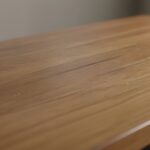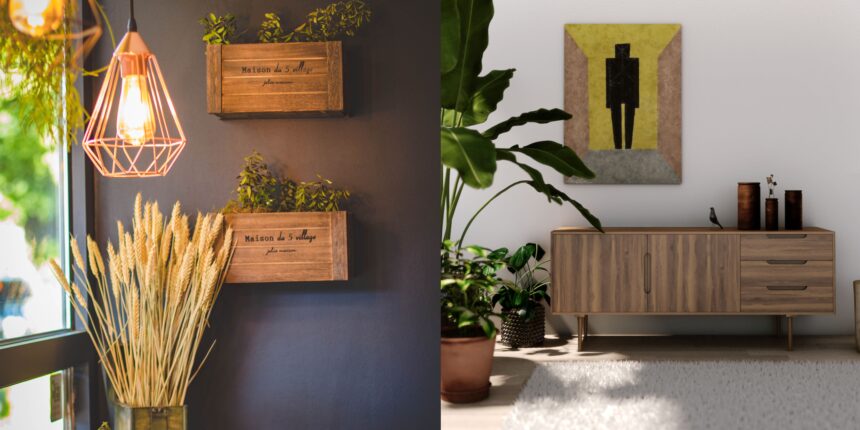Answer: Polyurethane is the best wood treatment for indoor furniture. It is a durable, water-resistant finish that is easy to apply and maintain.
What is the Best Wood Treatment for Indoor Furniture?
When it comes to protecting your indoor furniture from wear and tear, there are a few different wood treatments that you can choose from. But what is the best wood treatment for indoor furniture?
The best wood treatment for indoor furniture is one that will protect the wood from moisture, scratches, and stains. It should also be easy to apply and maintain.
There are a few different types of wood treatments that meet these criteria. These include:
- Polyurethane: Polyurethane is a durable, water-resistant finish that is easy to apply and maintain. It is a good choice for furniture that is exposed to a lot of wear and tear.
- Lacquer: Lacquer is a hard, glossy finish that is resistant to scratches and stains. It is a good choice for furniture that is used in high-traffic areas.
- Shellac: Shellac is a natural finish that is made from the resin of the lac beetle. It is a good choice for furniture that is antique or has a delicate finish.
The best way to choose the right wood treatment for your indoor furniture is to consider the type of wood, the amount of wear and tear it will be exposed to, and the desired finish.
How to Apply Wood Treatment
Once you have chosen a wood treatment, you need to apply it correctly to ensure that it provides the best possible protection. Here are the steps on how to apply wood treatment:
- Clean the wood surface with a damp cloth to remove any dirt or dust.
- Allow the wood surface to dry completely.
- Apply the wood treatment according to the manufacturer’s instructions.
- Allow the wood treatment to dry completely.
How to Maintain Wood Treatment
Once you have applied wood treatment, it is important to maintain it properly to ensure that it continues to protect your furniture. Here are a few tips on how to maintain wood treatment:
- Clean the wood surface regularly with a damp cloth to remove any dirt or dust.
- Avoid using harsh chemicals or cleaners on the wood surface.
- Reapply the wood treatment as needed, according to the manufacturer’s instructions.
By following these tips, you can help to keep your indoor furniture looking its best for years to come.
Additional Tips for Choosing and Using Wood Treatment
Here are a few additional tips for choosing and using wood treatment:
- If you are unsure which wood treatment to choose, consult with a professional.
- Test the wood treatment on a small, inconspicuous area before applying it to the entire surface.
- Follow the manufacturer’s instructions carefully when applying and maintaining wood treatment.
- Allow the wood treatment to dry completely before using the furniture.
By following these tips, you can help to ensure that your indoor furniture is well-protected and looks its best. required against moisture, wear, and scratches.
- Ease of Application: Choose a treatment that is easy to apply and maintain, especially for DIY projects.
- Environmental Concerns: Opt for treatments that are low in VOCs (volatile organic compounds) and environmentally friendly.
Additional Tips for Indoor Furniture Treatment:
- Sand the wood surface thoroughly before applying any treatment.
- Use a clean, high-quality brush or applicator.
- Apply thin, even coats and allow ample drying time between each coat.
- Test the treatment on an inconspicuous area first to ensure compatibility.
- Regularly clean and maintain the furniture to preserve its finish.
Differences Between Lacquer, Shellac, and Polyurethane Wood Treatments:
- Lacquer: Lacquer is a hard, glossy finish that is resistant to scratches and stains. It is made from nitrocellulose, which is a type of plastic. Lacquer is typically applied in multiple thin coats, and it dries quickly. Lacquer is a good choice for furniture that is used in high-traffic areas, such as tables and chairs.
- Shellac: Shellac is a natural finish that is made from the resin of the lac beetle. Shellac is a good choice for furniture that is antique or has a delicate finish. Shellac is also a good choice for sealing wood before applying other finishes, such as paint or varnish.
- Polyurethane: Polyurethane is a durable, water-resistant finish that is easy to apply and maintain. Polyurethane is a good choice for furniture that is exposed to a lot of wear and tear, such as outdoor furniture or kitchen cabinets.
Common Types of Wood Used for Indoor Furniture:
- Hardwoods: Hardwoods are durable and long-lasting, making them a good choice for furniture that will be used frequently. Common hardwoods used for indoor furniture include oak, maple, cherry, and walnut.
- Softwoods: Softwoods are less durable than hardwoods, but they are also less expensive. Common softwoods used for indoor furniture include pine, fir, and spruce.
- Engineered Wood: Engineered wood is a type of wood that is made from wood fibers that have been bonded together with adhesives. Engineered wood is strong and durable, and it is also less expensive than solid wood.
Benefits of Using a Penetrating Oil Finish for Indoor Furniture:
- Enhances the wood’s natural beauty: Penetrating oil finishes soak into the wood and enhance the wood’s natural grain and color.
- Protects the wood from moisture: Penetrating oil finishes help to protect the wood from moisture, which can cause the wood to rot or warp.
- Prevents the wood from drying out: Penetrating oil finishes help to prevent the wood from drying out, which can cause the wood to crack or split.
- Easy to apply and maintain: Penetrating oil finishes are easy to apply and maintain. They can be applied with a brush or a cloth, and they do not require any special tools or equipment.
Overall, penetrating oil finishes are a good choice for indoor furniture because they are durable, easy to apply and maintain, and they enhance the wood’s natural beauty.
Conclusion:
Choosing the best wood treatment for indoor furniture requires careful consideration of the type of wood, desired finish, protection level, and ease of application. Penetrating oil finishes offer excellent protection and enhance the wood’s natural beauty, while varnishes and urethanes provide a durable, high-gloss finish. Lacquers, waxes, and shellacs offer unique characteristics and protection levels. By understanding the different options and factors to consider, you can select the ideal wood treatment to protect and beautify your indoor furniture for years to come.







